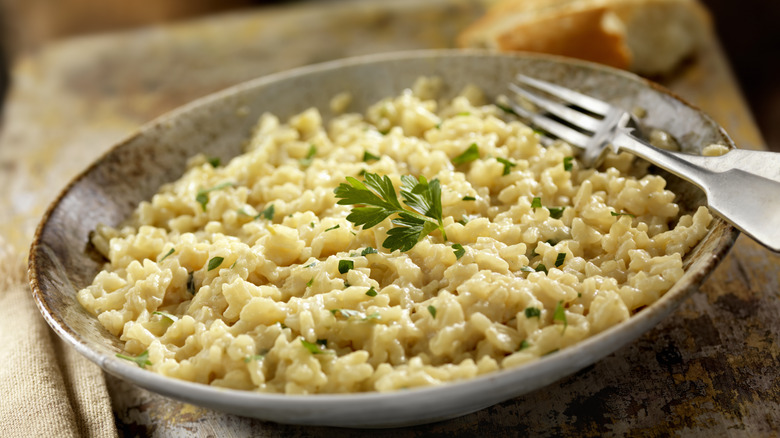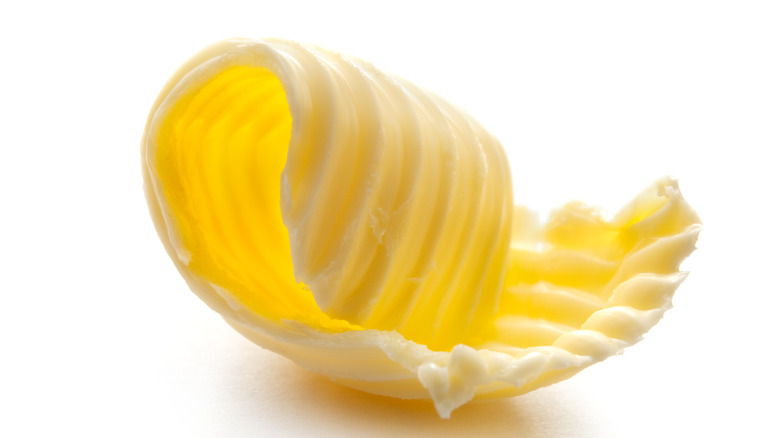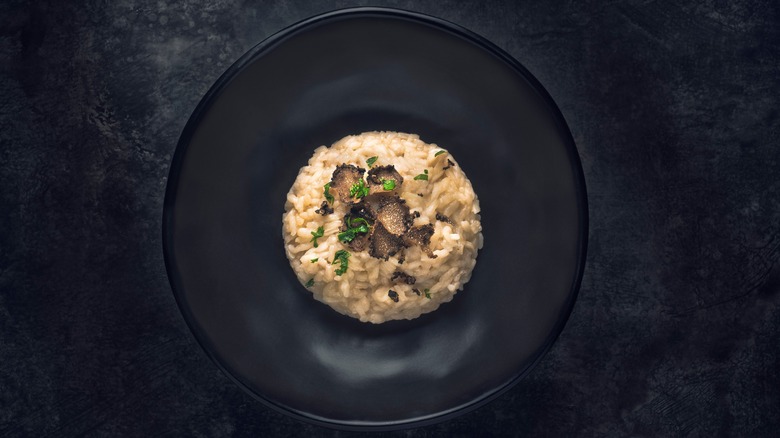When You Should Choose Butter Over Oil When Making Risotto
Fat is flavor. Think about dunking asparagus spears into creamy béarnaise sauce or adding a fried disc of warm goat cheese to a crisp salad. The addition of fat utterly transforms the dish. However, the type of fat you choose to cook with dictates the way the fat impacts the dish's flavor. For example, when making vegetable risotto, you should always use butter instead of oil to toast the rice and finish the dish. Risotto, which is traditionally made with super starchy rices like the Arborio or Carnaroli varieties, can be prepared with any number of ingredients, but the main point is to cook the rices slowly, adding liquid bit by bit, until the finished dish is a rich, flavorful porridge of rice that should be eaten immediately. And, by remembering to use butter instead of oil when preparing vegetable-based risotto, eating it quickly won't be a problem at all.
Sometimes butter is better
Butter is naturally a rich ingredient. Because it is so powerfully creamy and indulgent, butter both brings out the flavor of a vegetable risotto and adds some additional complexity. Oil, on the other hand, has a lighter flavor. Even the most fragrant olive oil, for example, doesn't have the deep richness that full fat butter does. There is a reason steak can be described as "buttery." After all, the dense richness that butter brings to a dish, especially one without a meat or seafood component, really rounds out and grounds the flavor profile. In fact, the specific timing of adding butter and cheese to a finished risotto to enrich it is referred to as "mantecatura" in Italian, which means the creaming of butter and cheese together. The double dose of butter, first at the beginning to toast the rice to bring out the nutty flavor, then at the end to enrich the final product, is the base of a delicious vegetable risotto.
Let the veggies be your guide
Now that you know how to finish your risotto, there's no shortage of ways you can start it. Let the farmer's market be your guide and cook with whatever vegetables are in season. In springtime, look toward the fresh greens available. Ramps, asparagus, and fresh peas all have short seasons, and it's worth it to maximize them by making them the star of your risotto. Summer of course lends itself to corn, tomatoes, and sweet onions as the base of any vegetable risotto. Fall brings with it all the root vegetables, and a rainbow of sweet potatoes, beets, parsnips, and squash can be folded into a simple risotto for a beautiful and delicious dish. And in winter, look to hearty vegetables like mushrooms to amplify your risotto. When it comes to adding seasonings and aromatics, let your own preference be your guide. All that's left to do is plate and devour the perfect vegetable risotto.


